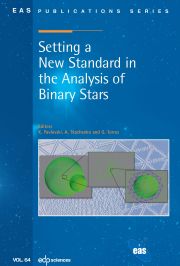No CrossRef data available.
Article contents
Lensing by Substructures
Published online by Cambridge University Press: 19 May 2006
Abstract
Gravitational lenses on arcseconds scales provide a tool to probe the massdistribution in the lensing galaxies at redshift z ≈ 0.5–1.0. Image positionscan be fitted using simple smooth galaxy mass models, but observed fluxes aremore difficult to match. We analyze the effects of substructures in galaxyhalos to explain such anomalies in the cusp and fold lensing configurationswith different approaches. In the first case we use detailed numerical simulations combined with a Monte Carlo approach to compare predictions from the ΛCDM small scale mass function with observed flux ratios. We extended our analysis down to a mass of ≈105 M๏ for the subhalos. Moreover, we considered extra-halos, like other galaxiessurrounding the primary lens: also if we include these effects we are not ableto reproduce the observed fluxes.This seems to indicate that there is no direct evidence for dark dwarfsatellites from multiple imaged QSOs.In the second case we try to constrain, with a semianalytical approach, the massand the position of a substructure by considering its effects on the flux ofthe images: we add to a smooth lens model, which reproduces well the positionsof the images but not the anomalous fluxes, one or two substructures described as singular isothermal spheres. With substructures in the mass range ~ 106–108 M๏ we are able to fit quite accurately the anomalous fluxes for fold configurations.
- Type
- Research Article
- Information
- Copyright
- © EAS, EDP Sciences, 2006


